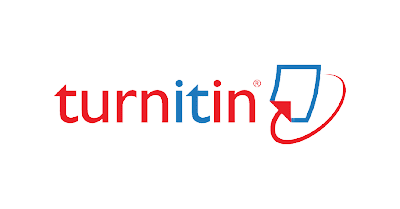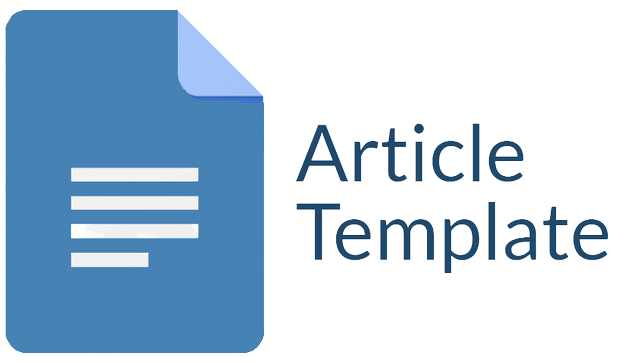ANALISIS DAYA DUKUNG AIR UNTUK MENUNJANG KAWASAN PARIWISATA BERKELANJUTAN DI KECAMATAN PUJUT
Abstract
Penetapan Kawasan Wisata Mandalika sebagai salah satu Kawasan Strategis Pariwisata Nasional (KSPN) super prioritas, kebutuhan akan pengelolaan sumber daya air yang efisien menjadi sangat penting. Tujuan penelitian yaitu mengkaji daya dukung air di Kecamatan Pujut, Lombok Tengah, dalam konteks pengembangan pariwisata berkelanjutan. Pendekatan penelitian dilakukan dengan analisis GAP melalui data sekunder untuk membandingkan ketersediaan air dan kebutuhan air di Kecamatan Pujut. Penelitian ini menemukan bahwa kondisi defisit daya dukung air sudah terjadi di sebagian besar desa di Kecamatan Pujut, dengan hanya beberapa desa yang mengalami surplus air. Dimana Kecamatan Pujut diproyeksikan mengalami penurunan dari 146.236.731 m³ pada tahun 2024 menjadi 141.823.515 m³ pada tahun 2044, sementara total kebutuhan air diperkirakan meningkat hampir 60%. Hasil ini menegaskan perlunya strategi pengelolaan air yang inovatif dan kolaboratif antara pemerintah, masyarakat, dan sektor swasta untuk mendukung perkembangan pariwisata yang berkelanjutan.
Downloads
References
Angelita, G., Saksono, E. H., & Septiana, W. (2024). Strategy to Build National Branding through the Power of StoryBrand (Introducing the Pinisi Ship and Indonesia Hospitality at the 2023 ASEAN Summit) [Review of Strategy to Build National Branding through the Power of StoryBrand (Introducing the Pinisi Ship and Indonesia Hospitality at the 2023 ASEAN Summit)]. American Journal of Humanities and Social Sciences Research (AJHSSR), 08(02), 100–111. https://www.researchgate.net/publication/376893179_Strategy_to_build_Nation_brand_throught_story_brand_Introducing_the_Pinisi_Ship_Indonesia_Hospitality_at_the_2023_ASEAN_Summit
BPS Kabupaten Lombok Tengah . 2024. Kecamatan Pujut Dalam Angka
Dirawan, A., & Jannah, W. (2023). Analisis daya dukung ketersediaan sumber daya air di kawasan Desa Wisata Labuhan Aji Pulau Moyo Kab. Sumbawa. Jurnal Teknologi Lingkungan Lahan Basah, 11(1), 1-12. https://doi.org/10.26418/jtllb.v11i1.61074
Dewandha Agastya, None I Wayan Yasa, & Gede, D. (2024). Optimization of Pengga Reservoir in The Mandalika Special Economic Zone for Irrigation and Water Supply. Journal of the Civil Engineering Forum, 163–172. https://doi.org/10.22146/jcef.7913
Dwipayanti, N. M., Nastiti, A., Powell, B., Loehr, J., Guthrie, L. and Johnson, H. (2020) WASH and Tourism in Mandalika, Lombok, Indonesia: Case Study Report. Report prepared by International WaterCentre, Griffith University. Brisbane, Australia.
Esa, F., Mahasiswa, P., Perencanaan, M., Kota, W., Arsitektur, S., Kebijakan, P., & Bandung, I. T. (2023). Dampak Pengembangan Kebiajakan Anugerah Desa Wisata Indonesia (ADWI) terhadap Pertumbuhan Industri Pariwisata dan Perekonomian Masyarakat Lokal (Vol. 13)
Gupta, R., Sharma, A., & Verma, P. (2021). Restoration of degraded watersheds: Role of vegetation in enhancing water infiltration. Ecological Engineering, 160, 106132. https://doi.org/10.1016/j.ecoleng.2021.106132
Jensen, M. E., Hoffman, G. J., & Howell, T. A. (2020). Drip irrigation: A solution for water use efficiency in agriculture. Agricultural Water Management, 231, 105987. https://doi.org/10.1016/j.agwat.2020.105987
Johari, H. I., Ansori, R. M., & Hadi, A. P. (2020). Studi Ketersediaan Sumber Air Untuk Pemenuhan Kebutuhan Rumah Tangga di Desa Ranggagata Kecamatan Praya Barat Daya Kabupaten Lombok Tengah [Review of Studi Ketersediaan Sumber Air Untuk Pemenuhan Kebutuhan Rumah Tangga di Desa Ranggagata Kecamatan Praya Barat Daya Kabupaten Lombok Tengah]. Jurnal Planoearth, 5(2), 119–123. https://doi.org/10.31764/jpe.v5i2.3248
Lingkungan, D. B. T. K. L. H. (2014). Pedoman Penentuan Daya Dukung Dan Daya Tampung Lingkungan Hidup. Jakarta: Kementerian Lingkungan Hidup Deputi 1 Bidang Tata Lingkungan.
Menteri Lingkungan Hidup. 2009. Peraturan Menteri Negara Lingkungan Hidup Nomor 17 Tahun 2009 tentang Pedoman Penentuan Daya Dukung Lingkungan Hidup Dalam Penataan Ruang
Mishra, R., & Goswami, P. (2020). Reservoirs: An effective solution for water scarcity management. International Journal of Water Resources Development, 36(4), 567-582. https://doi.org/10.1080/07900627.2020.1726964
Moerwanto, A. S., & Junoasmo, T. (2017). Strategi Pembangunan Infrastruktur Wisata Terintegrasi (Vol. 3, Issue 2).
Muta'ali, Lutfi, Sitti Sarifa Kartika Kinasih, and Sumini. Daya dukung lingkungan untuk perencanaan pengembangan wilayah. Badan Penerbit Fakultas Geografi (BPFG), Universitas Gadjah Mada, 2012.
Ng, F.(2023). Climatic Aseasonality, Phenological Differentiation And Speciation In Trees [Review Of Climatic Aseasonality, Phenological Differentiation And Speciation In Trees]. Journal of Tropical Forest Science, 35(2), 221–232. https://www.jstor.org/stable/48723358
Olson, D. (2024, October 8). Lesser Sundas Deciduous Forests. Diambil kembali dari One Earth: https://www.oneearth.org/ecoregions/lesser-sundas-deciduous-forests/
Rahman, A. dkk. 2022. Metode Penelitian Ilmu Sosial. Bandung. Widina Bhakti Persada Bandung Rencana Induk Pariwisata Daerah (RIPPARDA) Kabupaten Lombok Tengah Tahun 2016-2031
Santoso, D. H. (2015). Kajian daya dukung air di Pulau Bintan, Provinsi Kepulauan Riau. Jurnal Sains dan Teknologi Lingkungan, 7(1), 18-28. https://doi.org/10.20885/jstl.vol7.iss1.art1
Sudipa, N., Mahendra, M. S., Adnyana, W. S., & Pujaastawa, I. B. (2020). Daya Dukung Air di Kawasan Pariwisata Nusa Penida, Bali. Jurnal Sumberdaya Alam Dan Lingkungan, 7(3), 117–123. https://doi.org/10.21776/ub.jsal.2020.007.03.4
Suharyani, SP., M. S., Nurul Qisthi Putri, S., Adi Candra, S. S., Eduard Hutapea, S. S., David, F., & Annysha, Y. A. (2017). Daya Dukung Dan Daya Tampung Lingkungan Hidup Ekoregion Sumatera Berbasis Jasa Ekosistem. Sumatera: Pusat Pengendalian Pembangunan Ekoregion Sumatera.
Undang-Undang No.32 Tahun 2009 tentang Perlindungan dan Pengelolaan Lingkungan Hidup
United Nations. (2015). The 17 Goals. United Nations.
Purba, A., Sabri, L. M., & Nugraha, A. L. (2022). Analisis daya dukung dan daya tampung air menggunakan pendekatan SIG (studi kasus: Kabupaten Batang). Elipsoida: Jurnal Geodesi dan Geomatika, 5(2), 69-78. https://doi.org/10.14710/elipsoida.2022.16701
Copyright (c) 2025 Muhammad Yusuf Fauzan, Yosi Rima Riana, Widura Murdaka

This work is licensed under a Creative Commons Attribution-ShareAlike 4.0 International License.
Jurnal allows anyone to compose, correct, and do derivative works, even for commercial purposes, as long as they credit for the original work. This license is the freest. It is recommended for maximum distribution and use of licensed material.
The submitted paper is assumed not to contain any proprietary materials that are not protected by patent rights or patent applications; The responsibility for technical content and protection of proprietary materials rests with the authors and their organizations and not the responsibility of journal or its editorial staff. The primary (first/appropriate) author is responsible for ensuring that the article has been viewed and approved by all other authors. The author's responsibility is to obtain all necessary copyright waivers to use any copyrighted material in the manuscript before submission.
Jurnal Pendidikan, Sains dan Teknologi allows the author(s) to hold the copyright without restrictions and allow the author(s) to retain publishing rights without restrictions. Jurnal Pendidikan, Sains dan Teknologi CC-BY-SA or an equivalent license as the optimal license for the publication, distribution, use, and reuse of scholarly work. Jurnal Pendidikan, Sains dan Teknologi allows the author(s) to hold the copyright without restrictions and allow the author(s) to retain publishing rights without restrictions. Jurnal Pendidikan, Sains dan Teknologi CC-BY-SA or an equivalent license as the optimal license for the publication, distribution, use, and reuse of scholarly work.
In developing strategy and setting priorities Jurnal Pendidikan, Sains dan Teknologi recognize that free access is better than priced access, libre access is better than free access, and libre under CC-BY-SA or the equivalent is better than libre under more restrictive open licenses. We should achieve what we can when we can. We should not delay achieving free in order to achieve libre, and we should not stop with free when we can achieve libre.
Jurnal Pendidikan, Sains dan Teknologi is licensed under a Creative Commons Attribution-ShareAlike 4.0 International License.
You are free to:
- Share a copy and redistribute the material in any medium or format
- Adapt a remix, transform, and build upon the material for any purpose, even commercially.
- The licensor cannot revoke these freedoms as long as you follow the license terms.






